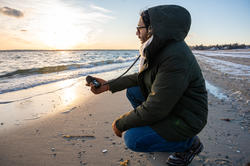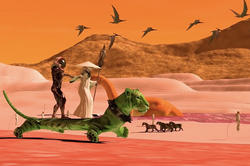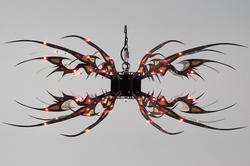Two new courses offered through the Digital + Media department encourage students to expand their creative practices by exploring sound design.
The Journey Begins for RISD’s First Cohort of Computation, Technology and Culture Students
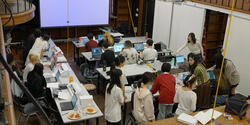
“As you prepare to critique each other’s work, think about shape, color, line, and material. Consider each piece in relation to the tools that were used to create it. How could the maker take it further?”
Professor Daniel Lefcourt addressed the first cohort of students in RISD’s newly launched Computation, Technology and Culture department as they prepared for their first Core Studio crit. Encompassing both Art and Computation and Sound BFA programs, the new department is led by longtime RISD Professor Clement Valla MFA 09 DM, and the core fall studio by Lefcourt and Assistant Professor Nick Larson MFA 22 GD.
Students majoring in Art and Computation and Sound are jointly exploring such core themes as interaction, networks and simulation, theories and methods of computational art making, and writing code. As they progress in their studies, the two programs diverge with Sound majors focusing on conceptual sonic work and sound design across media formats and Art and Computation majors developing senior-year degree projects expressing their personal interests in computational creative practice.
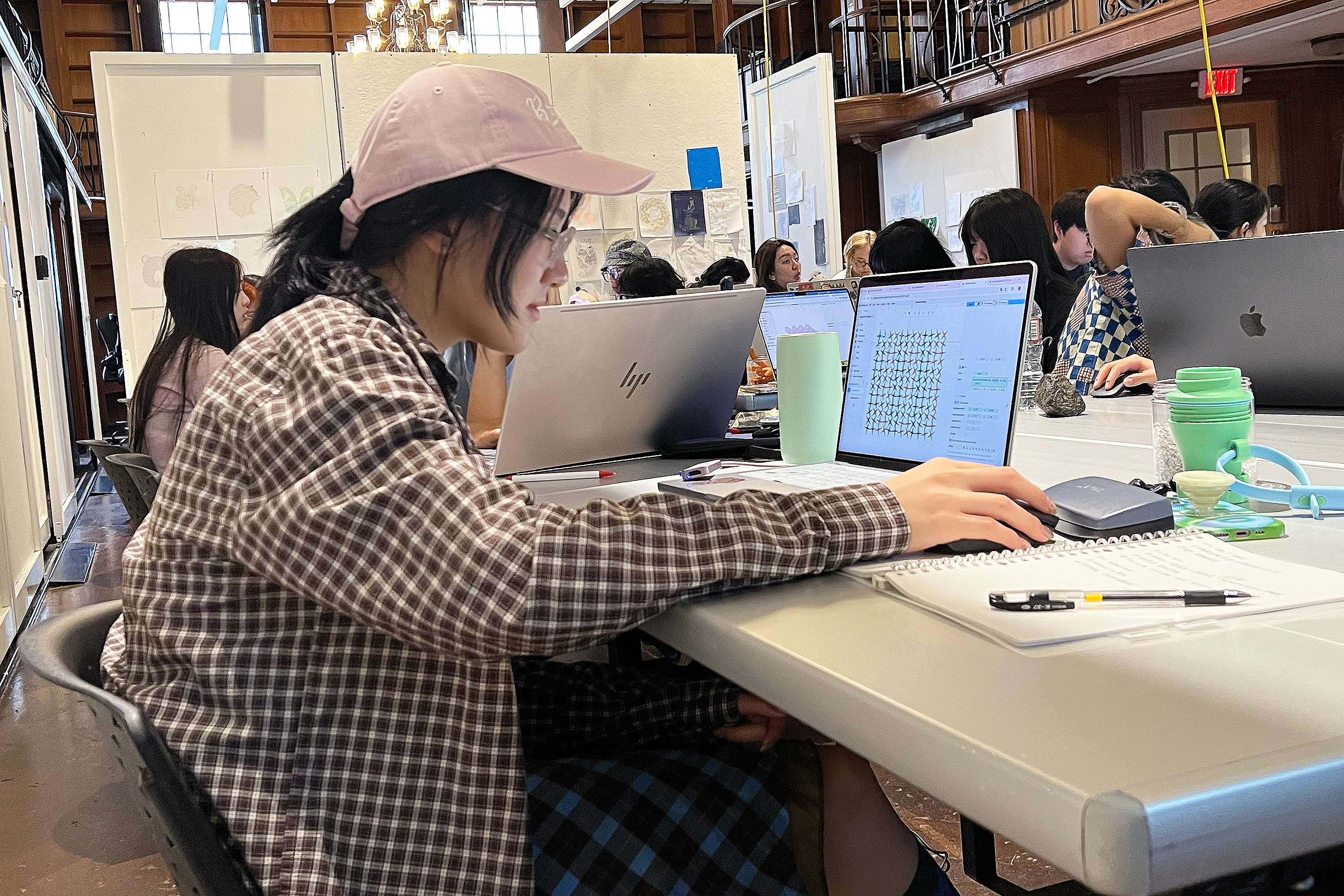
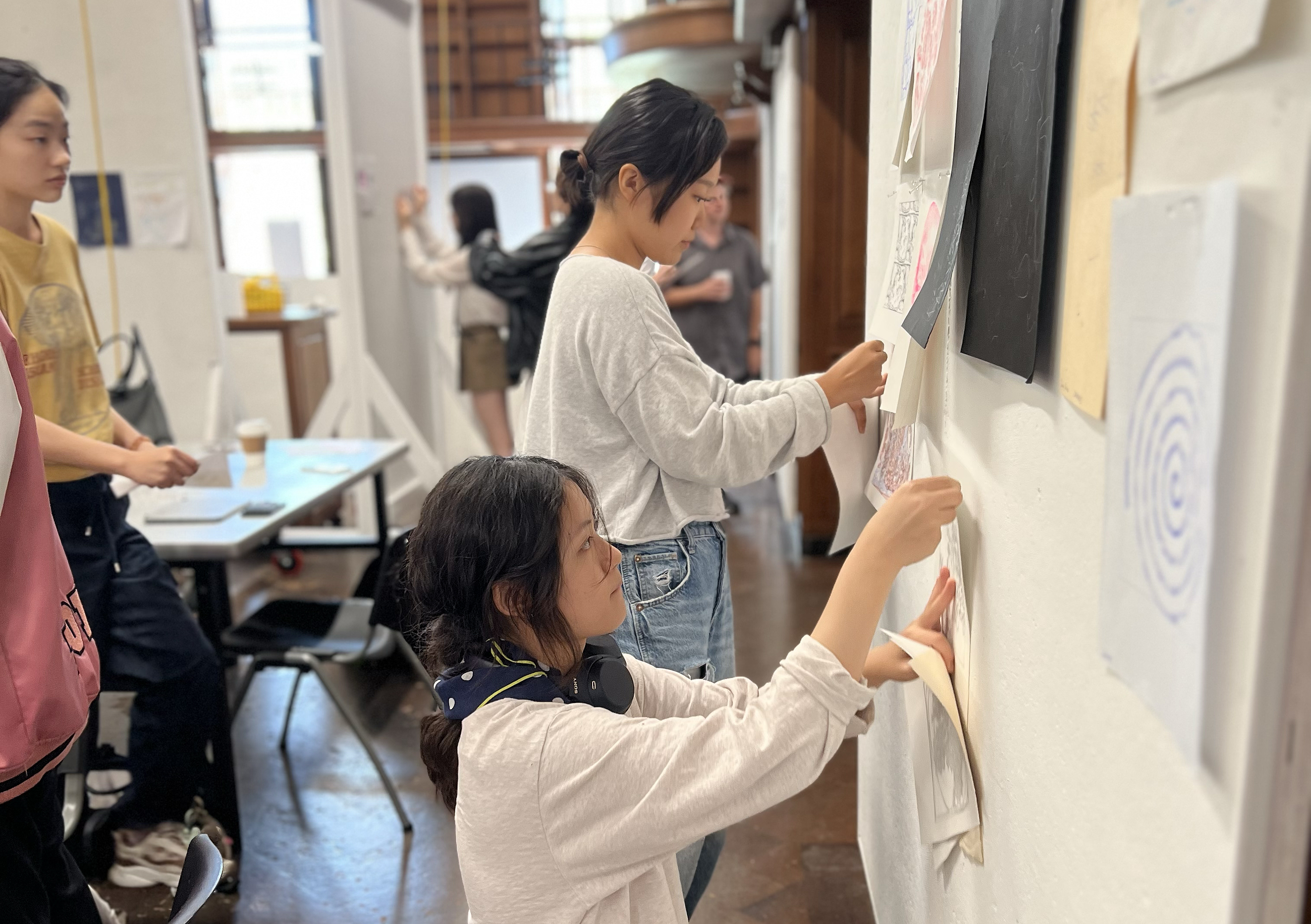
The Core Studio introduces students to essential digital art and design practices through hands-on exploration of vector graphics, raster graphics, motion, and 3D. It emphasizes digital output techniques and fabrication methods, including pen plotters, digital printing, video projection, and installation practices, teaching students to bridge the gap between screen-based design and physical output.
For the first assignment, students developed a series of related pieces combining analogue material exploration with digital procedural methods. Ivy Han 28 AC used Photoshop to create three images of a horse, each one more abstract than the last. Nathan Petree 28 AC appreciated her playful presentation and noted that “it looks like the horse is being deconstructed by the vectors.”
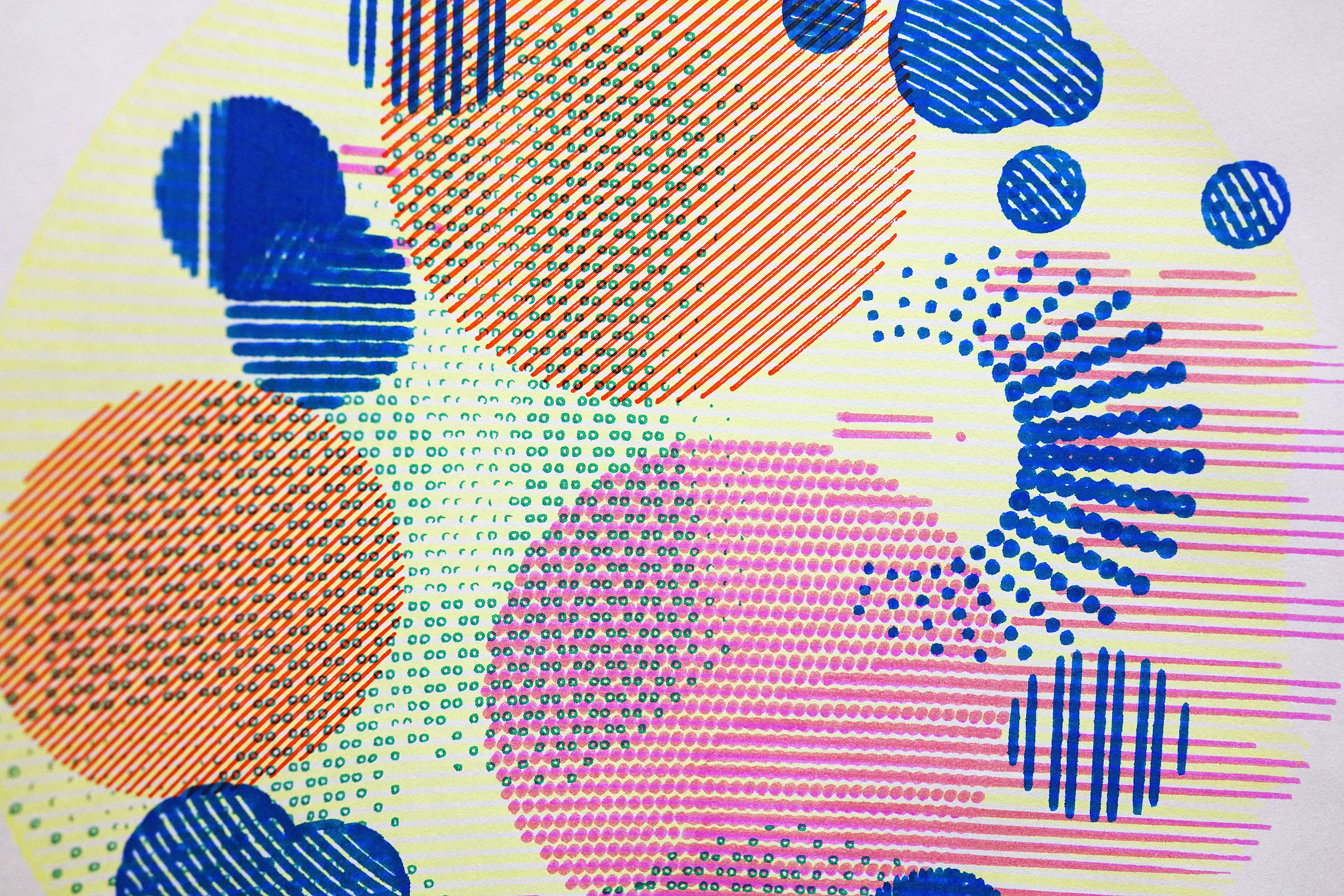
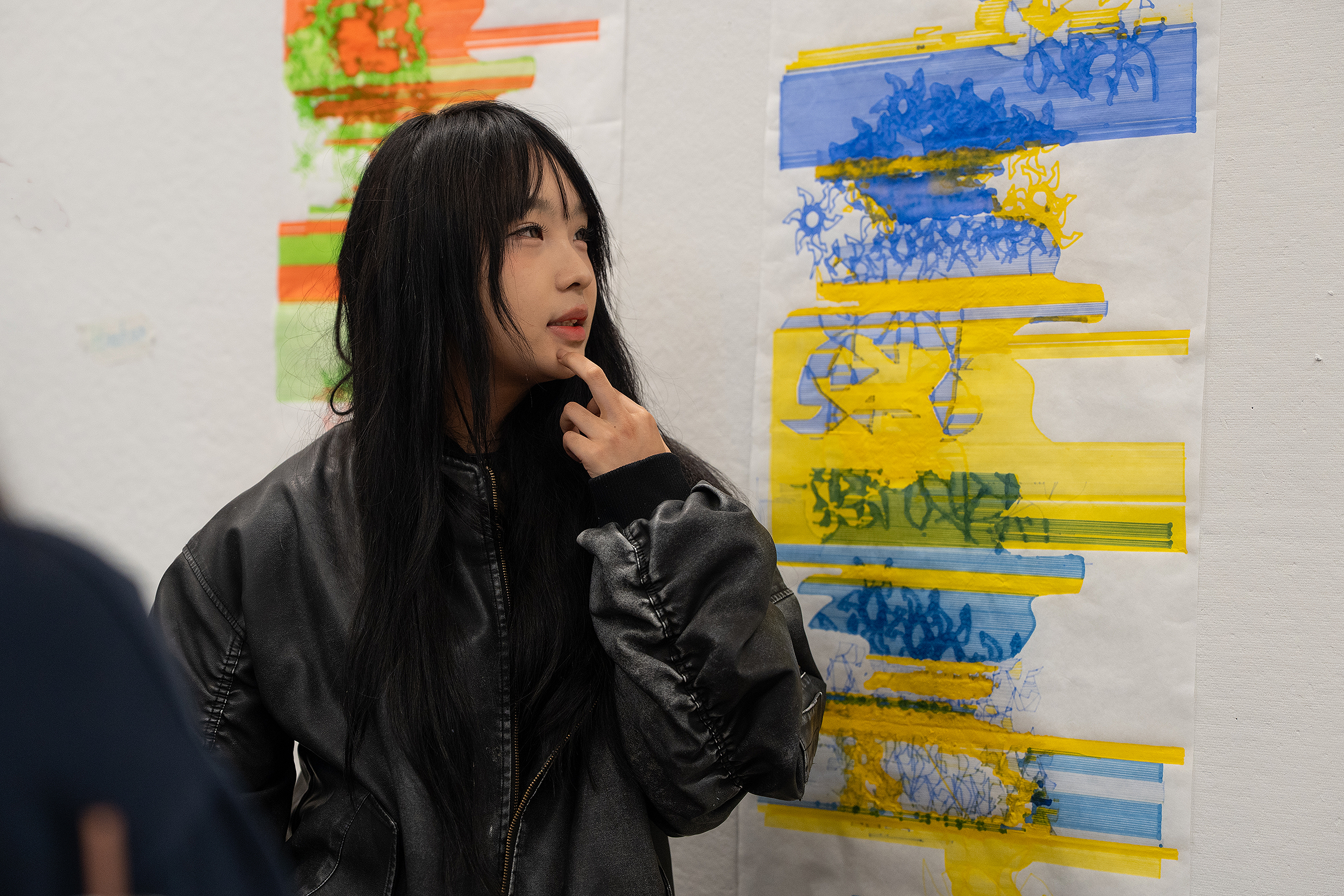
Dietrich He 28 AC shared a series of pieces including one that reminded the group of a Native American dreamcatcher. “Something about it brings to my mind a film by [acclaimed Russian filmmaker Andrei] Tarkovsky about perfection and divine geometry,” Lefcourt added. “I really appreciate your sophisticated use of abstraction.”
For the next assignment, students will move from points and lines to pixels and printers and work toward making their own books. They’ll begin by creating digital assets that they’ll work with over the course of the semester and beyond, such as series of photographs of the same object taken from multiple angles. “These assignments are intentionally open-ended,” says Larson, “fostering self-directed learning and encouraging students to develop their own creative voices.”
“We envision graduates of these programs defining their career paths in unique and uncharted ways.”
Other courses developed for the new majors include Experimental Unreal, which reimagines game engine software as a critical tool for contemporary art and design practice and emphasizes conceptual development alongside technical experimentation; Generative Systems, a course intended to enrich students’ understanding of digital tools while delving into a global history of generative art and design; Drawing with Computers, which goes deeper into the exploration of coding as a creative tool; and Sonic Mapping, a project-based course exploring the role of sound in storytelling, research, and artistic expression.
“We envision graduates of these programs defining their career paths in unique and uncharted ways,” says Valla. “The related industries are evolving at lightning speed, and our intention is not only to keep up with those changes, but to prepare RISD students to lead the conversation.”
Simone Solondz / photos by Kaylee Pugliese and Clement Valla MFA 09 DM
October 2, 2025
